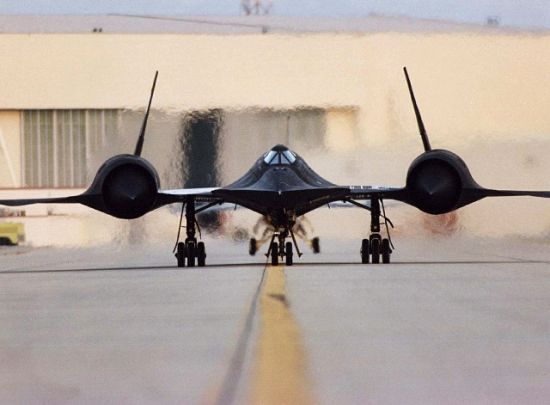|
||||||||||
|
|
||||||||||
|
||||||||||
|
|
||||||||||

Other well-known examples of this trend include the F-22 Raptor, F-117 Nighthawk stealth fighter, and F-35 Joint Strike Fighter. The feature traces its roots back to the 1960s when canted tails were incorporated into the SR-71 Blackbird and its predecessors, as shown below.

Lockheed designers included these canted tails based on early research into stealth technology. As far back as the 1940s, engineers had realized that perpendicular surfaces, like vertical tails, generated strong radar returns. By canting the tails away from 90°, the radar cross-section (RCS) of an aircraft could be considerably reduced. Kelly Johnson of Lockheed included canted tails in the SR-71 design since the original CIA requirements called for an aircraft as difficult to detect as possible, given the limited techniques of the day.
Northrop and McDonnell Douglas included canted tails on the YF-17, F-18, and F-18E/F for similar reasons. Though none of these planes is a true stealth aircraft by any means, simply canting the tails away from the vertical reduces the RCS to the same levels as a smaller aircraft.
The canted tails on the F-18 series provide some aerodynamic benefits as well. Along the sides of the forward fuselage are two long strakes called leading-edge extensions. These surfaces generate strong swirling vortices that allow the aircraft to operate at very high angles of attack. The F-18, for example, can reach an angle of attack as high as 50° without stalling. As these vortices travel back away from the plane, they create a high-speed airflow past the two vertical tails making them more effective in providing yaw control. In addition, the tails generate some pitch control since the aerodynamic forces acting on the canted tails are broken into vertical (pitch) and horizontal (yaw) components. The vertical component is used most effectively during takeoff. By turning both rudders inboard, the canted vertical tails produce sufficient downforce to help lift the nose of the plane and allow it to takeoff at a lower speed.

Since canting the vertical stabilizers has such an important impact on stealth characteristics, it is not
surprising that every stealth aircraft today employs them, with the obvious exception of tailless designs like the
B-2 Spirit.
- answer by Jeff Scott, 4 January 2004
Read More Articles:


|
Aircraft | Design | Ask Us | Shop | Search |

|
|
| About Us | Contact Us | Copyright © 1997- | |||
|
|
|||